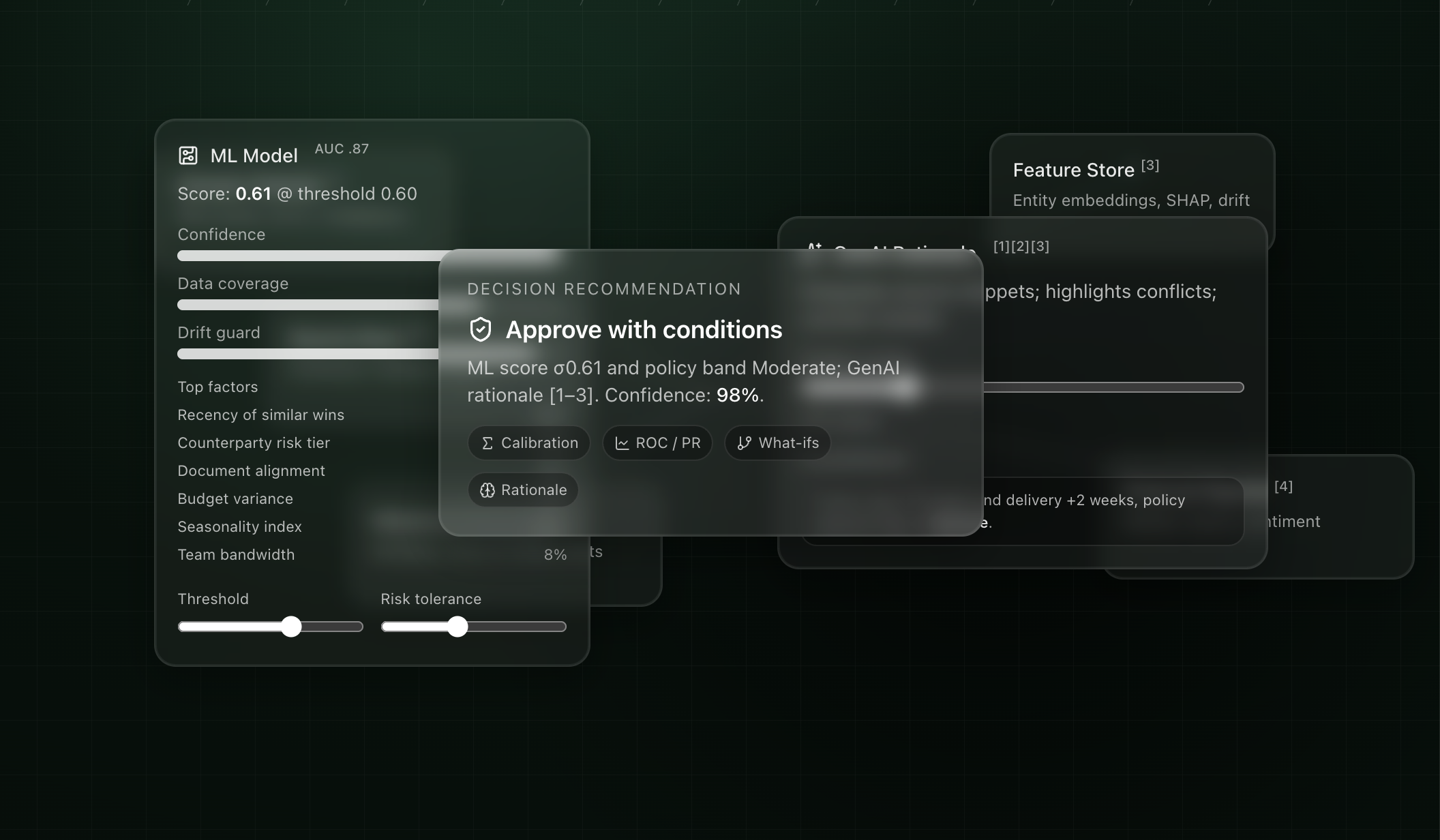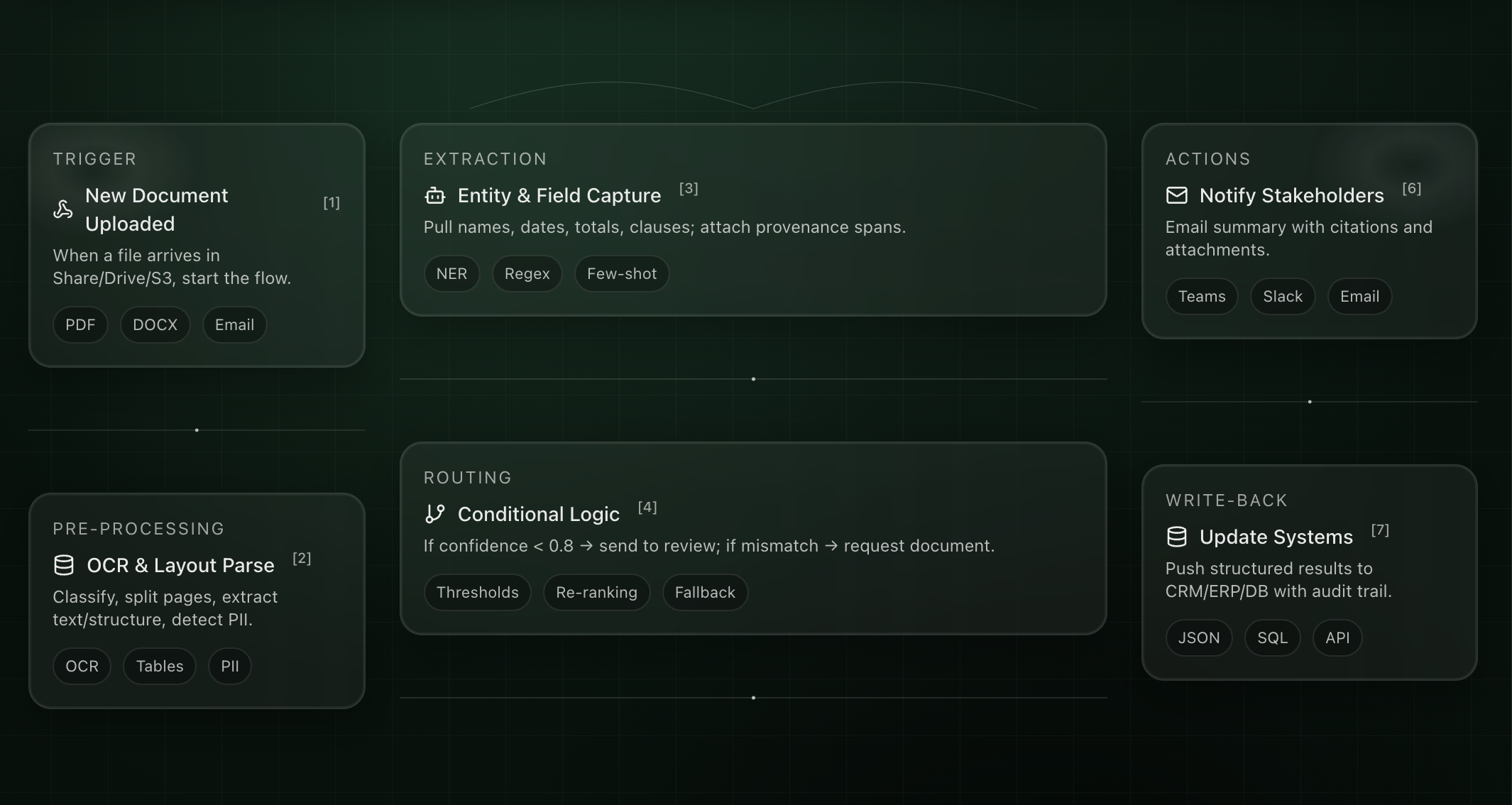Most leaders don’t lack dashboards—they lack timely, trusted answers to “what’s changing, why it matters, and what we should do next.” Deep decision support combines predictive models with generative AI to deliver that narrative in plain language, grounded in your data and context.
How It Works
Predictive models look ahead: demand next quarter, churn risk by segment, cost overruns on a project, likelihood of a permit delay. Those forecasts are saved in your database alongside the inputs and confidence levels. An enterprise LLM (private or hosted) then pulls those signals together with the relevant documents—policies, plans, emails, market notes—and produces a concise, sourced brief. It explains the “what,” the “so what,” and the “now what,” linking to the numbers and the materials that support the recommendation.
Why It Matters
Dashboards tell you what happened. Forecasts tell you what might happen. The combination tells you what to do about it, while there’s still time to act. Instead of hunting across spreadsheets and slide decks, leaders receive consistent, board‑ready summaries that surface early warnings, quantify impact, and lay out options. The result is fewer surprises, faster alignment, and decisions that can be explained and revisited with a clear record of assumptions.
From Reports to Living Analyses
Think of a morning brief that updates itself: it checks new forecasts in the database, scans for changes in inputs, pulls relevant project notes, and refreshes its recommendation. If a variance widens, it explains what’s driving it and suggests mitigations. If a regulation shifts, it identifies affected initiatives and proposes next steps. In a meeting, you can ask, “What if we slip the schedule by two weeks?” and the assistant reruns the scenario, shows the trade‑offs, and cites the sources behind its reasoning. The same engine can support frontline decisions too—prioritizing cases, flagging anomalies, and nudging actions that reduce risk.
Safety, Provenance, and Enterprise Fit
This works only if it’s trustworthy. Forecasts are versioned and stored with metadata; AI outputs cite the numbers and documents they use. Access follows your existing permissions, and sensitive fields can be masked. Every recommendation carries its assumptions and confidence level, and every action is logged for audit. Because the system runs on your stack—reading from your databases and content stores—you keep control while gaining leverage.
Getting Started
Begin with a few outcomes that matter: revenue predictability, operational risk, service levels. Stand up simple, well‑scoped models, persist the forecasts, and define what “good” looks like. Let the AI draft the narrative and options; keep humans firmly in the loop. As confidence grows, expand the scope, increase automation, and measure impact against KPIs.
The Takeaway
Deep decision support turns data into direction. By pairing forecasts that see ahead with AI that explains and recommends, leaders make faster, clearer, more defensible decisions—every day, at every level.



